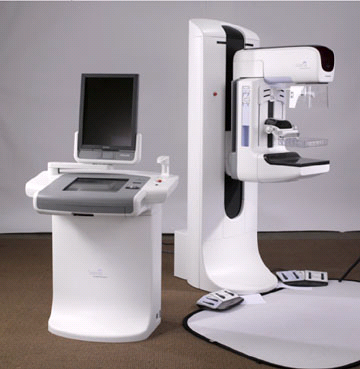PACS Requirements for Digital Breast Tomosynthesis (DBT), 3D Mammography, & Molecular Breast Imaging (MBI)

Photo Credit ACRIN/Hologic
Currently, there are disagreements about the appropriate starting age and frequency of mammographic breast scans. However, due to recent governmental recommendations and reduced insurance reimbursement, the frequency of these radiologic visits will likely be delayed to once every two years. Concurrent with these new recommendations, advances in technology have emerged to supplement mammography to enhance the detection of breast tissue tumors without increasing the incidence of false positives. Both new technology and the likely increase in the span between imaging examinations pose challenges to your PACS.
Is your facility prepared to handle these coming changes in breast imaging? This post will help you navigate these issues and outline PACS requirements for Digital Breast Tomosynthesis (DBT), 3D Mammography, MRI, and Molecular Breast Imaging (MBI) that you should consider.
New Techniques and Technologies in Breast Imaging
It is now more critical than ever that your PACS is capable of handling the various new breast cancer screening modalities and ensuring prior imaging for each patient is readily available.
Magnetic Resonance Imaging (MRI) has long been the preferred tool to supplement mammograms for women who are considered high-risk and/or have dense breasts. However, Digital Breast Tomosynthesis (DBT), a 3D breast imaging technology, has recently gained in popularity as a supplement to mammography in difficult cases and is becoming available in many imaging centers. Studies have found that women who have undergone DBT have decreased recall rates and increased cancer detection.
Most recently Molecular Breast Imaging (MBI), pioneered at the Mayo Clinic, has emerged as an even further enhanced breast imaging technology. At the Mayo Clinic, MBI detected 3.6 times as many invasive cancers as mammography. Its use is strictly a supplemental technology designed to find tumors in women with dense breast tissue.
Medical Image Size and Storage Challenges
Digital Breast Tomosynthesis poses the greatest medical image storage challenge of the new breast imaging technologies. DBT takes between 10 and 100 images of each breast, depending on the imaging modality and breast size. These images are then aggregated together and rendered in 3 dimensions to provide a highly focussed view of the breast tissue. Since traditional mammograms capture only 2 images of each breast (top to bottom and side to side), DBT generates significantly larger study sizes. Typical tomosynthesis studies average about 450 MB in size but can be as large as 3 GB. This increase in file size may slow digital image transmission and use of storage media.
Access to Prior Studies
With each of these technologies, it is important to have access to prior breast imaging studies to compare the changes since previous examinations. Gaining access to these studies can sometimes be problematic. Patients who had prior imaging done at a different facility need to bring CDs or DVDs of these prior studies and the existing PACS needs a foolproof methodology for uploading these studies for comparison. Every practice has received discs that were unreadable, damaged, or contained the wrong information. Oftentimes patients simply forget their CDs entirely. This all causes delays in diagnosis or even leads to erroneous comparisons. Some studies, such as DBT, may not even fit on a single CD or DVD, making the physical transport of these studies difficult.
On-site PACS can fill up as years of these studies begin to accumulate for their patients. The ability to capture these studies electronically in the cloud provides great advantage to the more traditional siloed and static PACS. All too often physicians make the decision to add new imaging modalities without considering whether their existing PACS is capable of supporting the expensive new equipment purchase. The last thing you want is your PACS hindering your ability to begin to amortize your modality investment.
6 Things to Consider
As you consider these new and emerging technologies that will no doubt improve your patients’ outcomes, it would be useful to do your own self analysis in advance of any new purchases to be sure your PACS requirements for Digital Breast Tomosynthesis (DBT), 3D Mammography, MRI, and Molecular Breast Imaging (MBI) are met. Such PACS requirements include:
- Robust enough storage to accept large image studies
- Expandable storage as these images begin to cumulate
- Fool-proof mechanisms for uploading studies from CDs and DVDs
- Able to receive studies electronically
- Quick and efficient recall of prior patient studies
- Capable of the appropriate protocols for on-screen comparison
Considering your PACS in advance of your new equipment purchase will help ensure your investment provides you with the intended payback.
-----------------------------------------------------------------------------------------------------
To Learn More About Digital Breast Tomosynthesis (DBT) Watch Our Webinar:
Featuring Dr. Mark Baganz of Chesapeake Medical Imaging
This free Webinar covers a comparision of 2D vs 3D Mammography, a review of Digital Breat Tomosynthesis, equipment cost considerations, as well as technical requirements to consider before making a switch.
Whether you are a doctor considering implementing 3D Mammograpy, a practice owner trying to learn more about new technologies, or even a patient curious about new treatment options -- this webinar is right for you!




